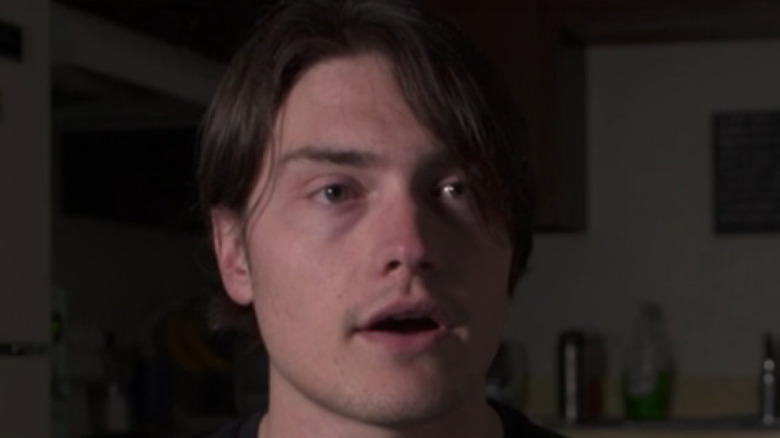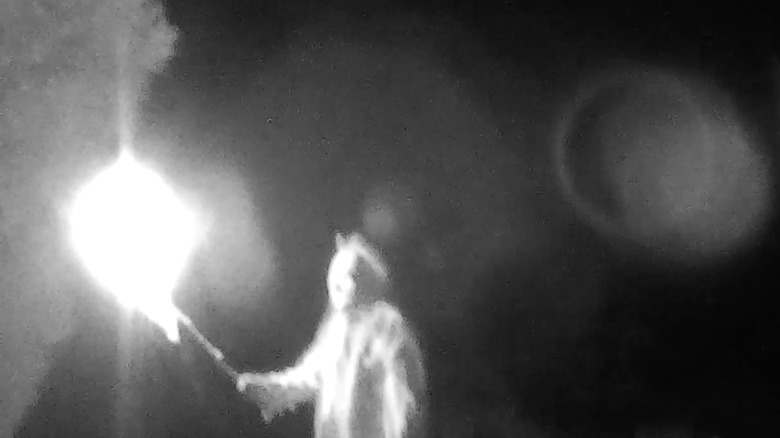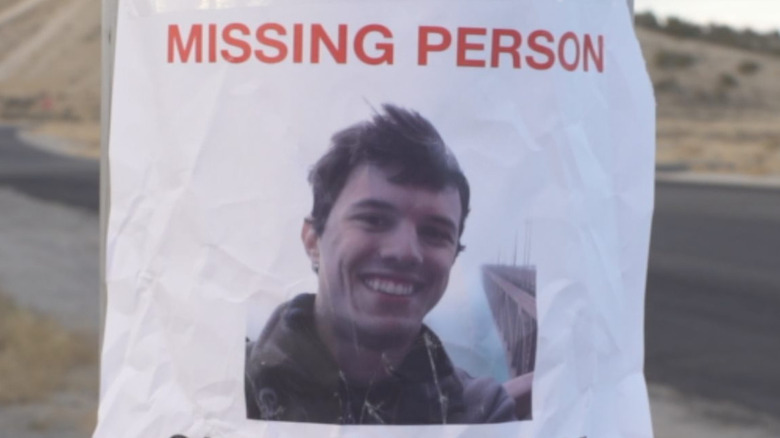The Ending Of Horror In The High Desert Explained
Bridging the gap between hyper-realistic found footage horror movies and the modern horrors of the influencer-fan relationship, "Horror in the High Desert" follows the disappearance of Gary Hinge (Eric Mencis). The slow burn mockumentary features a small, inexperienced cast, basic editing, and inconsequential typos that sell the indie "documentary" aura.
Director Dutch Marich's pandemic project received mixed reviews, but most viewers agree that the final stretch nails the tension associated with found footage. As the film shifts from the talking heads to finally showing the recovered footage of Hinge's final hike, the true crime tone quickly dissolves into true terror.
With a severed hand and several choppy black-and-white clips to figure everything out, it's difficult to piece together who his attacker was, why he was drawn toward that shack, and whether or not the reporter's explanation was true.
So, what really happened at the end of "Horror in the High Desert?"
Who attacked Gary Hinge?
While everyone in the mockumentary was quick to determine, 'Oh, it was just a disfigured man hiding from society,' not all viewers were satisfied with that explanation. The zombie-like figure's brutality was seemingly written off with this explanation, as well as the smell of smoke, the dizzying music he hears, and the impending sense of doom as he drew closer.
Earlier in the movie, Hinge references abandoned mining shafts and Native American artifacts. Because this is a horror movie with an open ending, it's fair to wonder if his attacker was a supernatural entity protecting a sacred space. While Hinge is genuinely excited about and respectful of the spaces he is charting, the ghost of a former resident may see him only as an intruder that must be stopped.
Or, if we are to agree that it was a social reject attacking him, it isn't out of bounds to wonder if this desert dweller is a cannibal. After all, there's a burning smell that is unfamiliar to Hinge, who is such an experienced hiker that his friends say he's more of a "survivalist." His body is never found, but his cleanly-severed hand was found by campers. Maybe that's all that was left of him.
His followers, who knew him as Scorpion Sam, speculated about aliens, witches, and ghosts being to blame for his disappearance. Despite the case closing, people were still invested in figuring out what happened to Hinge — at whatever cost.
A real-life Horror in the High Desert
While Marich hasn't alluded to being inspired by the real-life disappearance of YouTuber Kenny Veach in 2014, the parallels are too uncanny to be a coincidence. Veach, known online as snakebitmgee, was an active member of hiking content communities. The Nevada-based nature enthusiast, much like Gary Hinge, was pressured by followers to revisit a mysterious finding to prove that he was telling the truth.
Unlike Hinge, however, Veach appears to have simply vanished — no foul play or supernatural encounters. That hasn't stopped online users from speculating, including theorizing about Area 51, confidential military information, and unknown dark secrets that could've been in the cave.
Given the similarities, it isn't surprising that the ending of "Horror in the High Desert" reveals that social media users and influencers began seeking out Hinge's last known location. These people were documenting their expeditions, hoping to find the mysterious shack and the man who attacked the vlogger. The film ends with a black title card that tells viewers one of the groups was on track to reveal its findings in 2022.
In an exclusive interview with Dread Central, Marich confirmed that means another film is coming. "Not only is there a sequel, but I have plans for a Horror in the High Desert Universe," he said. Considering the last title card, it's likely the social media angle will be further explored in the next movie, in addition to an uncovering what happened to Gary Hinge.


